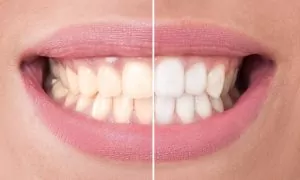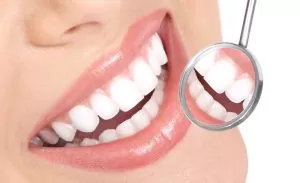Stains on teeth is a common problem plaguing people across the world. It causes sparkling teeth to changes colour to yellow or brown. Many people seek dental care for discolouration of teeth as it is a very visible problem. There are many reasons behind staining of teeth. Lifestyle, food habit, medicines, trauma and even lack of personal hygiene to the teeth all bring about staining in the teeth. Aging also changes the colour of the teeth.
Staining of teeth, be it recent or something that has been there for a long time, usually will cause distress in people. The main worry is that other people would notice. Being conscious of losing the pearly white colour of the teeth have known to bring down self confidence in people. Help is easily available at any dental clinic. Before that it is important to know the different types of staining.
Types of stains
Stains are classified based on where they appear – is it below the dental enamel or on the surface of the teeth. They are called extrinsic or surface stains, intrinsic stains and those related to age. Pigmented stains on the surface of the teeth are called surface stains. These are caused due to food or residue from the food or drinks that are consumed. They would stick on the surface of the teeth – on the enamel part of the teeth. Habits such as smoking or tobacco usage also cause this type of stains.
Intrinsic stains are seen below the surface of the teeth. This is a bit more complicated as the stain causing particles to penetrate the dental enamel part of the teeth and accumulate there. Being exposed to too much fluoride during childhood, trauma to the teeth or using antibiotics – all these are known to cause internal staining.
Age related staining combines both the internal and external staining characteristics. As one age, the dental enamel loses its protective covering. The inner part of the teeth becomes more visible which is more yellow compared to outer dentine. Staining also is seen due to continued exposure to habits such as smoking or eating habits. A combination of factors leads to yellowing of teeth as one gets older.
Staining of teeth is not seen in only adults, children also have discoloured teeth. One of the primary reasons would be improper brushing. Children’s teeth are usually whiter than adults as they are milk teeth. Improper brushing can result in plaque or tartar build up in the teeth. Many medications given to children have a high content of iron in them, this can also cause discolouration. Some would also develop yellow teeth if they have any illness or too much fluoride. Milk given to children if mixed with water that has too much of fluoride can also cause staining of teeth.
Treatment and procedure to remove stains
Stain removal products and techniques are many and varied. Extrinsic stain removal is comparatively easier when compared with the other types. Stained enamel is one condition that is commonly seen in many. This can be easily done in dental clinics. The external stains are removed using instruments. Focus is on the removal of plaque or tartar build up. After this cleaning process, teeth are polished. A technique termed as ‘air flow’ is commonly used. This will help in removing the surface stains and also calculus deposits. The result would be clean and bright teeth. This is one of the processes that can be done within a short time in a clinic.
Another quicker treatment is in-house teeth bleaching. This also takes less time like the stain removal technique and within a few hours one would get whiter teeth and a boost of self-esteem. Other products that are available are whitening toothpaste, whitening strips and whitening gums and mouthwashes. These whitening products can be bought as over the counter products. There are different views on the effectiveness of these products. It is recommended that suggestions from dentists are taken before these products are used. Some would be allegoric to the ingredients used in these over the counter products.
Teeth whitening is another type of treatment that is provided by dentists. This requires professional expertise and makes the teeth whiter. It involves professional bleaching and is the most common method used in teeth whitening. The type of treatment is decided by the dental experts after consultation. They would place a protective cover to shield the gums. The whitening product is then placed on the teeth. It can be easily applied – trays of whitening products are placed on the teeth to change their discolouration. This will take a few weeks as time is needed to prepare the whitening trays. These trays are custom made. They are made after taking the exact measurements of the teeth for a good fit.
Laser whitening is one of the revolutionary techniques that is adopted by many these days. In this method, a whitening gel is applied to the teeth. After application of the product, teeth are exposed to laser light. This would be usually done for an hour or so. After the process is completed, the teeth become whiter instantly. This is favoured as teeth whitening is done in a single session. Besides the above teeth whitening methods, some would also go for other dental procedures like teeth bonding and dental veneers.
Teeth whitening would induce teeth sensitivity and irritation of gums in some. In teeth sensitivity, teeth would experience discomfort while consuming hot or cold food and drinks. The tingling sensation and slight pain would remain for some time and would fade away later. Irritation of the gums is also observed. Even though protection is used while applying whitening products to the teeth, if the gums come in contact with the products it can irritate the gums. Gums will appear red and inflamed due to this exposure. All these are temporary but if unsure it is better to check with dentists. Guidance from dentists should be taken before one decides to go for any dental procedures, this helps promote good oral health.




